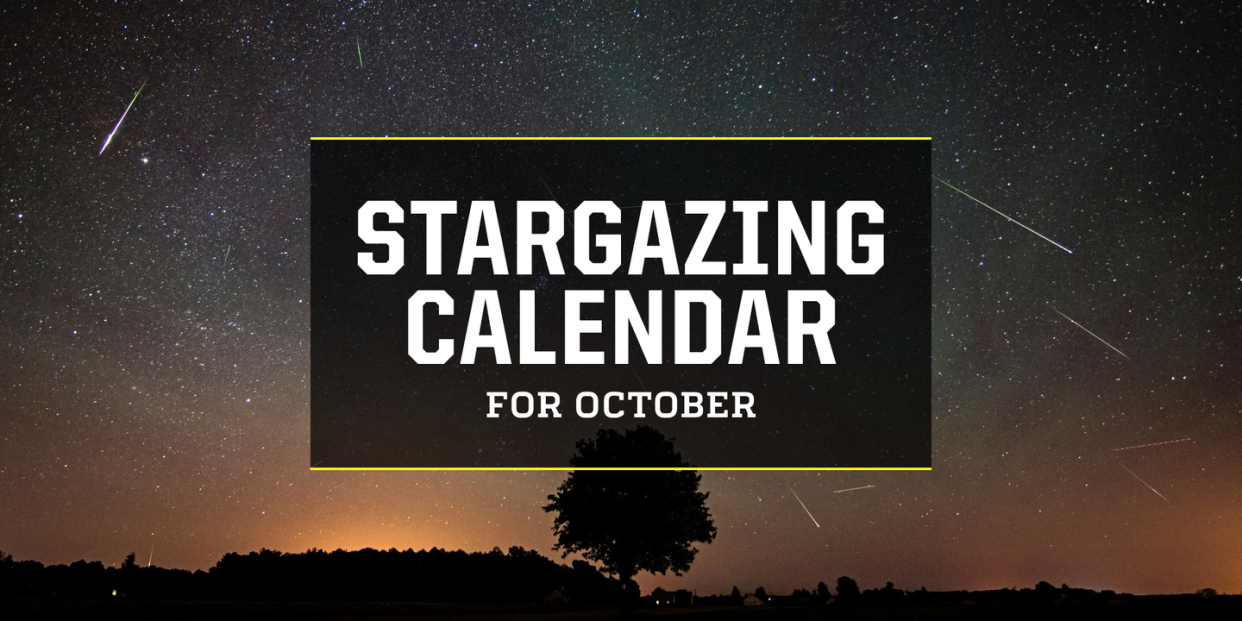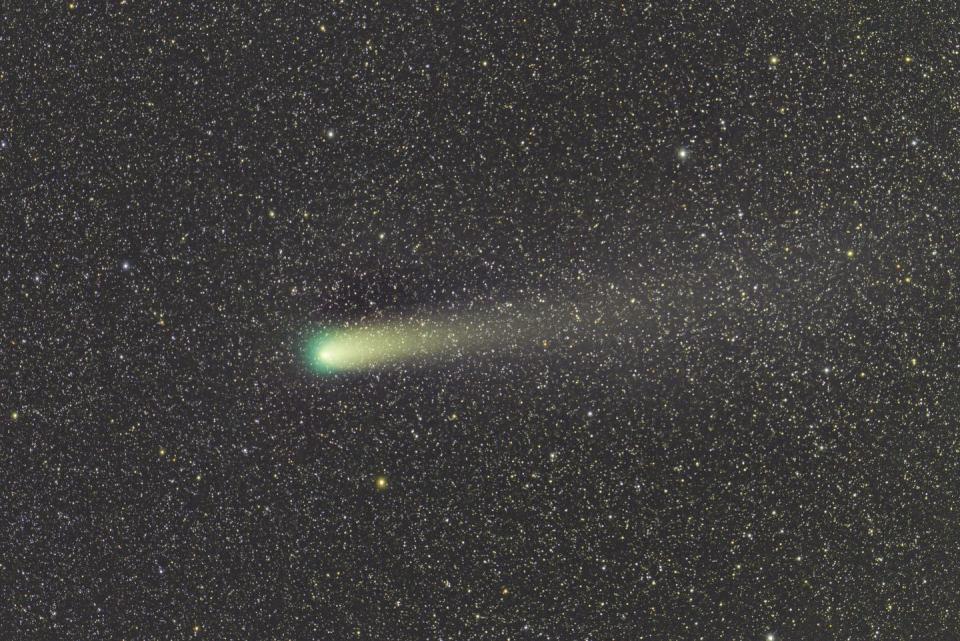Your Stargazing Calendar for October 2022: A Partial Solar Eclipse, Views of Mercury, and More

A pair of meteor showers about two weeks apart will highlight October’s night sky.
Mercury will be at its greatest western elongation, meaning October is the best time to get a view of the planet.
The October full moon, the Hunter Moon, comes early in the month.
Place your focus on meteor showers, Mercury, and a full moon when you look up at October’s night sky.
🌌 You love stargazing. So do we. Let’s view the cosmos together—join Pop Mech Pro.
Following a brief hiatus in powerful meteor showers, October boasts two of them, peaking about two weeks apart, along with the year’s best view of Mercury. Of course, October has its own full moon, which you can glimpse on October 9.
✨ Mercury at Greatest Western Elongation

That’s a mouthful to say, but it means you can get a quality view of the Swift Planet (not just a clever nickname—Mercury is the fastest-moving planet in our solar system) on October 8.
Mercury’s greatest western elongation is 18 degrees from the sun, considered the most opportune time to view the planet as it reaches its highest point relative to the horizon and the sun’s morning rise. To find Mercury, look low in the eastern sky about an hour before sunrise.
☄️ Meteor Showers

Start with the Draconids meteor shower and then move right into the Orionids meteor shower for a full range of October shooting stars.
The Draconids is a minor shower with only a dozen or so meteors per hour thanks to the dust from comet 21P Giacobini-Zinner, first discovered around 1900. The highlight of the Draconids shower—the most active time, and the best for viewing—comes high in the sky during evening hours, instead of the morning, which means there’s a greater chance you’ll be awake to catch a shooting star. During rare years, the Draconids come alive and blow away the expected number of meteors per hour.
With a short run from October 6–10, plan for October 8 to provide the peak viewing, even if hampered by ample moonlight. This shower also marks the start of another relatively active meteor shower season.
The Orionids run significantly longer, from October 2–November 7, and offer peak activity on the mornings of October 21 and 22. About double the output of the earlier Draconids, the Orionids come from the dust from the famed comet Halley. Named for the way the shower appears to radiate from the constellation Orion, the Orionids will present a decent chance at quality viewing after midnight.
🌔 The Hunter Moon

Enjoy your October full moon, the Hunter Moon, on the evening of October 9 and into the morning hours of October 10. While not as bright as the supermoons we saw through the summer, the Hunter Moon should still be a delight, especially if the weather remains clear in your area.
☀️ Partial Solar Eclipse

Let’s not get too carried away with the partial solar eclipse coming on October 25. Not only is it partial—when the moon covers only a portion of the sun—but it will be difficult to see from North America. The best chance for viewing, using a solar filter, occurs in much of Europe, parts of Asia, and northeast Africa. Of course, if you happen to find yourself in Iceland, you’ll get a great view of the partial eclipse of the sun.
You Might Also Like

